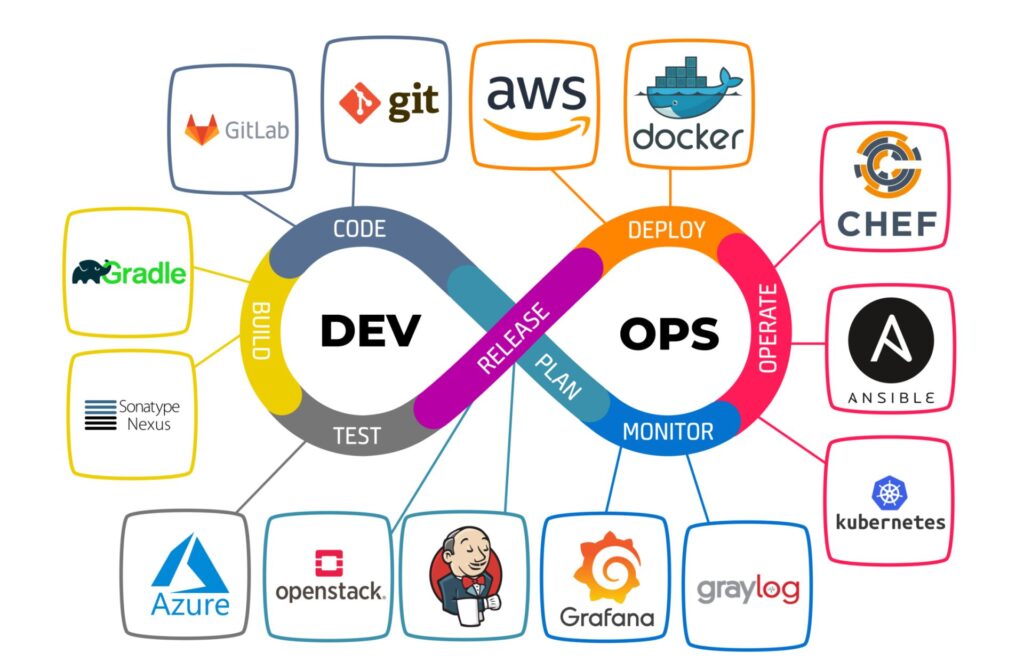Introduction
In today’s fast-paced tech landscape, DevOps has become a game-changer for organizations aiming to accelerate software delivery while maintaining high quality. But what exactly is DevOps, and how can you implement it effectively?
Additionally, DevOps is changing how companies build and deliver software. By bringing developers and operations teams together, organizations can release updates faster while maintaining quality. But what exactly does it take to succeed with DevOps?
In this guide, we’ll walk through the key steps to implement DevOps effectively. You’ll learn:
- What DevOps means (it’s more than just tools!)
- How to set up automated pipelines for smooth deployments
- The must-have practices that separate successful teams from struggling ones
- Answers to common questions about getting started
Whether you’re a developer, sysadmin, or manager, these insights will help you transform how your team works.

Understanding the DevOps Approach
Additionally, DevOps combines software development (Dev) and IT operations (Ops) into one smooth process. Instead of throwing code over the wall between teams, everyone works together from start to finish.
DevOps: Why This Matters for Your Business
- Speed: Release new features in days instead of months
- Reliability: Then, catch problems before they reach customers
- Teamwork: Break down barriers between departments
- Cost Savings: Fix issues early when they’re cheaper to resolve
At its core, DevOps is about working smarter, not harder.
Moreover, DevOps helps teams build and deliver software faster by breaking down walls between developers and IT staff. Then, it’s like having your builders and maintenance crew work together from day one.
Why DevOps Matters to You
- Ship features faster – Go from idea to live in days, not months
- Fewer midnight emergencies – Catch problems before customers do
- Less finger-pointing – Teams work together instead of blaming
- Save money – Fix small issues before they become expensive
Getting Started: 5 Easy Steps
1. Change How Your Team Works
- Have developers and IT ops eat lunch together (really!)
- Make everyone responsible for both building and running systems
- Reward people for fixing mistakes, not hiding them
2. Let Machines Do the Boring Stuff
Automate these first:
- Testing code changes
- Setting up servers
- Moving code to production
Popular free tools: Jenkins, Ansible, Docker
3. Build a Software Assembly Line
Set up a pipeline that:
- Tests every code change automatically
- Packages working versions
- Ships them to customers
This catches 80% of problems before users see them.
4. Keep Watch Like a Night Guard
Moreover, good monitoring tells you:
- When servers are getting full
- If new features break things
- Where to improve next
Start with simple tools like Grafana or Datadog.
5. Lock the Doors (Security)
Do these basics:
- Scan code for known weaknesses
- Store passwords safely
- Then, check who can access what
Moreover, free tools: SonarQube, Vault
Real-World Tips That Work
- Start small – Fix one painful process first
- Celebrate small wins – Each automation helps
- Cloud makes it easier, but you can start anywhere
- Write things down – Then, save your team hours of guessing
- Measure progress – Count deployments, not meetings
DevOps Answers to Common Questions
Q: How is this different from Agile?
A: Agile plans the work, and DevOps delivers it smoothly.
Q: We’re a small shop – does this help us?
A: Yes! Small teams benefit most from working smarter.
Q: What skills do we need?
A: Willingness to learn beats fancy degrees.
Q: When will we see results?
A: Most teams improve within weeks.
Q: Do we need expensive tools?
A: Start with free options, grow as needed.
Your First Steps
- Pick one annoying task to automate this week
- Have a coffee chat between the dev and ops staff
- Try one new tool – maybe a free monitoring option
- Check in weekly – Then, what’s getting better?
Remember: Every great DevOps journey starts with a single automated test!
